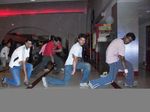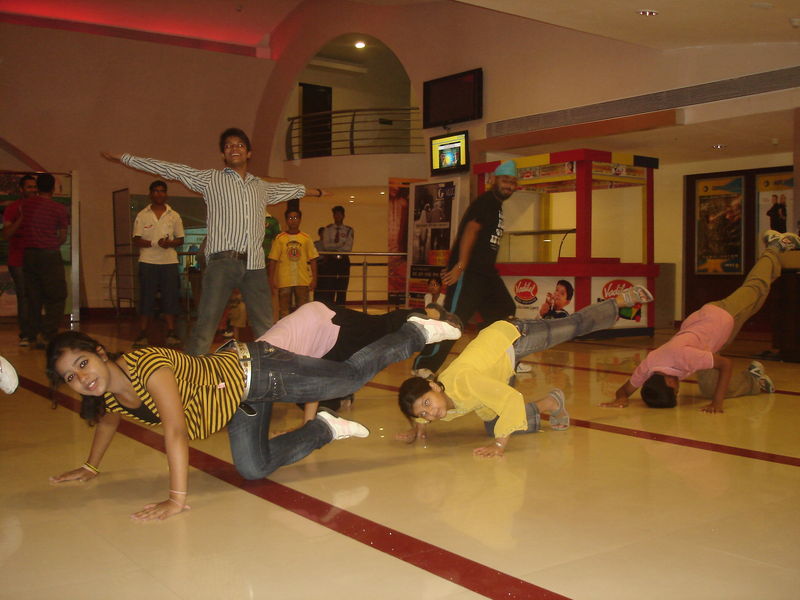news4u.mysite.com
BHARTIYAM & INOX BOLLY JAZZ CLASSES
BHARTIYAM & INOX IS ORGANIZE A BOLLY JAZZ WESTERN DANCE CLASSES AT INOX GOMTI NAGAR RIVER SIDE MALL. FOR DETAIL CONTACT PH. 9935048076 & 9450901105.DURATION 5 TO 20 JUNE. 9:30 TO 10:30 AM.
TEACHER KULJEET SINGH.
students name are SHREYA MUKHERJEE, ROMENDRA PRATAP SINGH, MADHAV MAHAJAN, DEVANSH SAXENA, JYOTIKA SRIVASTAV, OMIL RASTOGI, AISHVARYA ADITI, STUTI SAXENA, SIDDHARTHA ARORA, AKSHAY AGRAWAL, GAURAV SINHA, PRIYANK AGRAWAL, NIHARIKA PANDEY, AANCHAL AGRAWAL, MEDHA PANDEY, FARAZ SIDDHIQUI, ANAMIKA SINGH, SHUBHAM SHUKLA, NITISH KUMAR, NEHA SINGH, MANSI ARORA,
BHARTIYAM BOMBEY BEATS CLASSES
BHARTIYAM IS ORGANIZING BOMBAY BEATS DANCE CLASSES AT M 4/76 VINAY KHAND GOMTI NAGAR LUCKNOW. SPECIALY FOR LADIES. PH 9450901105
TEACHER RATNA ASTHANA
PRIYANKA GUPTA, AADRIKA RASTOGI, ASITA PANDAY, MALLIKA SINGH, SAPNA VERMA, SAKSHI SRIVASTAV, ASMITA PARMAR, PRENA BORA, PARIDHI GOEL, AANCHAL AGRAWAL, HARSHITA SAXENA, CHAITALI BISWAS, SUGANDHA VERMA, TRIPTI NEGI, PAVNI DIXIT, ANJALI THAKUR,
LATEST NEWS
Youngsters at the Indian-Western dance bolly jazz classes being held at INOX by Inox and Bhartiyam cultural group, are not just coming their to learn dance but they are also looking towards a career in this field. Shubham Shukla who hails from Canada finds these classes something more than just enjoyment. Shubham is amazed to the see the enthusiasm in people for Salsa and other western dances and compares it the craze that people in Canada have for Indian dances like Bharatnatyam and Kathak. He sees this craze as a part of the increasing globalistaion that we are facing today. His pal Madhav sees a career in choreography while Gaurav Sinha wants to perform at the stage of Dance India Dance. Another student at the class Akshay Agarwal wants to be known as popular dancer. For Mansi Arora dance is no less than religion, while M.com student Neha Singh wants to show her dancing skills to her friends. But for Anamika Singh, Shreya Mukherjee and Anchal Agarwal dance is the right way stay fit and healthy. Director Arts, Bhartiyam Shubha Asthana informed that western dance competition would be organised on the 20th of June.
ABOUT JAZZ DANCE
Jazz dance originated from the African American vernacular dance of the late 1800s to the mid-1900s. Until the mid 1950s, the term "jazz dance" often referred to tap dance, because tap dancing (set to jazz music) was the main performance dance of the era. During the later jazz age, popular forms of jazz dance were the Cakewalk, Black Bottom (dance), Charleston, Jitterbug, Boogie Woogie, Swing dancing and the related Lindy Hop. After the 1950s, pioneers such as Katherine Dunham took the essence of Caribbean traditional dance and made it into a performing art. With the growing domination of other forms of entertainment music, jazz dance evolved on Broadway into the new, smooth style that is taught today and known as Modern Jazz, while tap dance branched off to follow its own, separate evolutionary path. The performance style of jazz dance was popularized to a large extent by Bob Fosse’s work, which is exemplified by Broadway shows such as Chicago, Cabaret, Damn Yankees, and The Pajama Game. Today, jazz dance is present in many different forms and venues. Jazz dance is commonly taught in dance schools and performed by dance companies around the world. It continues to be an essential element of musical theatre choreography, where it may be interwoven with other dance styles as appropriate for a particular show. Jazz dancing can be seen in music videos, in competitive dance, and on the television show, So You Think You Can Dance.
ABOUT HIP HOP DANCE
The dance style primarily associated with hip hop as breaking, which appeared in New York City during the early 1970s and came to be popularly classified as one of the four primary "elements" of hip-hop (along with rapping, DJing, and graffiti).Funk styles, such as popping and locking, evolved separately in California in the 1960-70s, but were also integrated into hip hop when the culture reached the West Coast of the United States. Though breaking and the original funk styles look quite different stylistically, they share many surrounding elements, such as their improvisational nature, the music they are danced to and the way they originated from the streets, mainly within African American and Hispanic communities. These similarities helped bring them, and other street dance styles, together under the same sub-culture, and help to keep them alive and evolving today. Yet, this has not been without problems, often involving the media, such as when the movie Breakin' put all various styles under the label "breakdance", causing a great naming confusion that spawned many heated debates. In the late 1980s, as hip hop music took whole new forms and the hip hop subculture established further, new dance styles began appearing. Most of them were danced in an upright manner in contrast to breaking with its many ground moves, and were in the beginning light-footed with lots of jumping. Some moves hit the mainstream and became fad dances, such as The Running Man, but overall they contributed a lot to later hip hop styles, and heavily influenced the development of house dancing. During the 1990s and 2000s, parallel with the evolution of hip hop music, hip hop dancing evolved into heavier and more aggressive forms. While breaking continued to be popular on its own, these newer styles were danced upright, and draw much inspiration from earlier upright styles. Classifying these newer hip hop styles as a unique dance style of its own has grown common with larger street dance competitions such as Juste Debout, which includes hip hop new style as a separate category for people to compete in. Today, we see many specific styles that first appeared on their own, such as krumping and clown walking, now being danced and accepted within hip hop new style contexts. All hip hop styles from the 1980s and beyond are sometimes collectively called new school while the distinct styles from the 1960-70s, such as breaking, uprocking, locking and popping, are considered old school. However, this classification is controversial, and often old school hip hop (or, in some areas, hype) is used solely for the late 1980s upright and jumpy hip hop styles, excluding locking, popping and breaking, and new style hip hop for the heavier hip hop styles of today. Hip hop and break dance soon became popular among Asia. Today hip hop is well known all over the world and despite cultural differences among the hip hop dancers they all follow the same moves.

